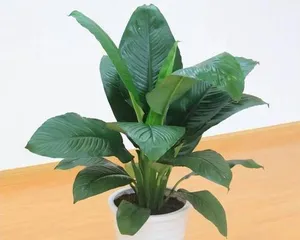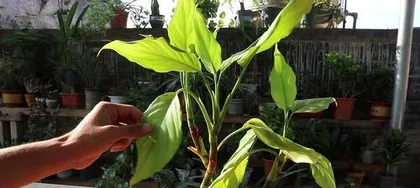In the modern era of pursuing a natural ecological environment, green plants have become mainstream for home decoration. Among the many green plants, the evergreen plant is deeply loved by families for its characteristics such as drought tolerance and strong adaptability. Can you also grow evergreen plants at home? This article will introduce you to the planting and care of evergreen plants.

Soil Selection
Use soil that is rich in organic matter, well-draining, and has good aeration for planting. The soil pH should be neutral to slightly alkaline.
Pot Selection
It is advisable to choose a pot with a depth of about 20cm to facilitate root growth.

Lighting Environment Selection
Evergreen plants do not have high light requirements. They can be placed in a bright location, but should be avoided from prolonged exposure to strong sunlight.
Watering
Watering should be appropriate and timely. Avoid overwatering, which can cause root hypoxia or root rot. At the same time, avoid watering the leaves to prevent water droplets from causing diseases.
Fertilizing
Choose organic fertilizer or phosphorus and potassium fertilizers for application, once a month is sufficient.

Pruning and Shaping
Regularly prune overly long, withered yellow leaves and branches to maintain tidiness.
Pest and Disease Control
Regularly check the plants and soil to prevent pests and pathogens from harming the plants. If diseases occur, use insecticides and fungicides for control.
Transplanting
When the pot is too large or the soil is too old, the plant needs to be moved to new soil and a pot to facilitate its growth and development.
Propagation Methods
It can be propagated by methods such as grafting, division, and cuttings.
Points to Note for Planting
When planting, pay attention to the distance between plants to avoid overcrowding, which affects their growth and development.
Suitable Temperature
The suitable temperature for evergreen plants is 15°C to 25°C. It is necessary to keep them warm during the cold season.
Pay Attention to Ventilation
Maintaining proper ventilation can prevent growth problems caused by lack of oxygen in the plants.
Indoor Air Humidity
Evergreen plants do not have high requirements for air humidity, but in a relatively dry indoor environment, the humidity around the plants can be appropriately increased.
Emphasize Observation
Observing the condition of the plants daily, identifying problems in time and dealing with them can prevent the plants from suffering from serious diseases and pests.
Conclusion
Planting evergreen plants can not only add a green touch to your home but also allow you to gain a deeper understanding of the growth, development, and changes of plants. I hope this article is helpful to you and makes your home more vibrant.